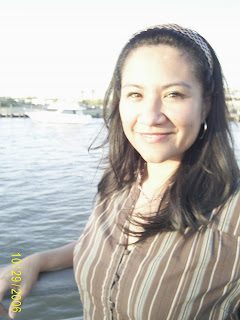
It is in no way to be trampled on. Respect for others and for oneself is a sign of strength. It is not courteous to abruptly pass an elder on the street. They tend to frown on that.
Even their pets are trained to obey the commands of their owners. It was common to see a dog or two waiting outside a restaurant or store waiting patiently for their master. The condition of being esteemed by others is a big part of the Hispanic culture.
Ordering lunch one day, our waiter told us that the meal we wanted had to be placed a day in advance. Gary, our tour guide, said, “Are you kidding me?!” The young waiter replied, “No sir. I would not disrespect you in any way or joke with you about that.” Gary had to make it clear that he did not think the waiter was being disrespectful, only that he was surprised by the time
required for ordering paella. I was taken aback by the seriousness this waiter had placed on what I thought was simple banter. “Gosh,” I thought. “It was not that big a deal.”
The demand for respect and intolerance of disrespect was made clear to me on several occasions. A group of us were waiting for a flamenco show to start at Casa Patas. We decided to stop at a bar for a drink. About eight of us were present. No one else was at this bar. The bartender began taking our order. One of the girls asked in English, "How much is it for a beer?" He looked at her, smiled and shrugged his shoulders. She repeated herself in English, only this time much slower and a bit louder, "HOW MUCH FOR A BEER?” He replied in
Spanish "More than a bottle of water and less than a mixed drink.”
“I'll have a beer,” she said, sounding annoyed.
Another girl asked in Spanish for a common American mixed drink. He was not familiar with it. He said, “If I went to your country and asked for a Spanish drink, would you be familiar with it? Obviously not. So what can I get you?"
My heart started pounding. I felt we had offended him in some way.
He walked out to fill our order. I followed him. "Hi," I said speaking in Spanish. “My name is Sonia. I am sorry if taking our order was a bit frustrating.” He replied “Hi. My name is Fernando. I am working here. All I ask is for a little respect. I would not disrespect you all in your country, and all I am asking is that you all don’t disrespect me in mine. Vale?” “Okay,” I said.
I walked back out to where my group was sitting just in time to hear someone say, "That bartender is a bit rude."
I was a bit confused. We walked into his bar, in his country, speaking our language. Yes, we are Americans, but we are in Spain. Maybe we could be more polite and courteous? We should attempt to speak their language. Even if we butcher it, it would be more polite than expecting them to speak English. I tried to blow the encounter off and enjoy the show.
We then traveled to Pamplona, where the famous running of the bulls festival is held each year. The bullring was closed. The bull entrance had barricades in front of it. Two young guys in our group decided it would be fun to jump the barriers and take a peak inside. They were chased out by a man on a forklift. No se puede,” (It is not allowed) he yelled in Spanish. “Those barriers are there for a reason.” The two young guys laughed and said, “Oh well! You are only in Spain once.”
One of the women in our group shouted, “Si, se puede.” and laughed. She continued shouting it and raising her hands, laughing the whole time. The phrase, coined by the Mexican-American civil rights activist Cesar Chavez, was the motto for the United Farm Workers. It has more recently become a rallying cry for immigrant rights activists in the United States. Ironically, we were the foreigners and we were breaking through the barriers.
At that moment, I was very embarrassed to be clustered with arrogant Americans who were shouting boastfully. Respect it is a big part of the Hispanic culture. Lack of respect, sadly, is a common trait for Americans touring another country.


